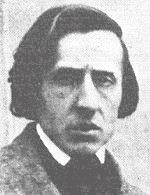 The
Polish Classroom
The
Polish Classroom
 The
Polish Classroom
The
Polish Classroom
A Polish Classroom in 1936
Do you see any similarities to the U.S. classrooms you have seen?
Polish Classroom at the University of Pittsburgh



Be less curious about people and more curious about ideas.
Marie Curie (1867-1934) Polish-French chemist
In "Webster's Electronic Quotebase," ed. Keith Mohler, 1994.
Rooms in Cracow's Wawel Castle, the residence of kings for centuries, inspired this setting for tributes to Poland's famous astronomer, Copernicus, and the science that his theories revolutionized.
Artists came to Pittsburgh from Cracow to paint the superb ceiling of 18-foot beams with informal geometric Renaissance decorations. The room is illuminated by a bronze chandelier bearing a stylized Polish eagle. The walnut seminar table was copied from one in a state dining room at Wawel Castle.
A replica of the famous Matejko portrait of Copernicus shows him as a young man pursuing his study of the universe from a workshop on the roof of his uncle's house in Olsztyn. In the bay stands an enlarged replica of the 16th-century Jagiellonian Globe, the first to depict North America as a separate continent. The original globe -- only eight inches high -- was designed to operate as a clock and calendar. It took the metalsmith in Cracow five years to complete the large globe.
The windows combine hexagonal handmade roundels, similar to those in Wawel Castle, with stained-glass coats of arms representing Polish institutions of Higher education. The cornerstone is a fragment of Gothic cornice preserved from the Collegium Maius (1369), the ancient Jagiellonian Library.
Poland's music is represented by the original manuscript of Ignace Paderewski's only opera, Manru, which is displayed in the archive cabinet.

Sometimes I think, not so much am I a
pianist, but a vampire. All my life I have lived off the blood of Chopin.
Artur Rubinstein (1887-1982) Polish-USA virtuoso pianist
Attributed.